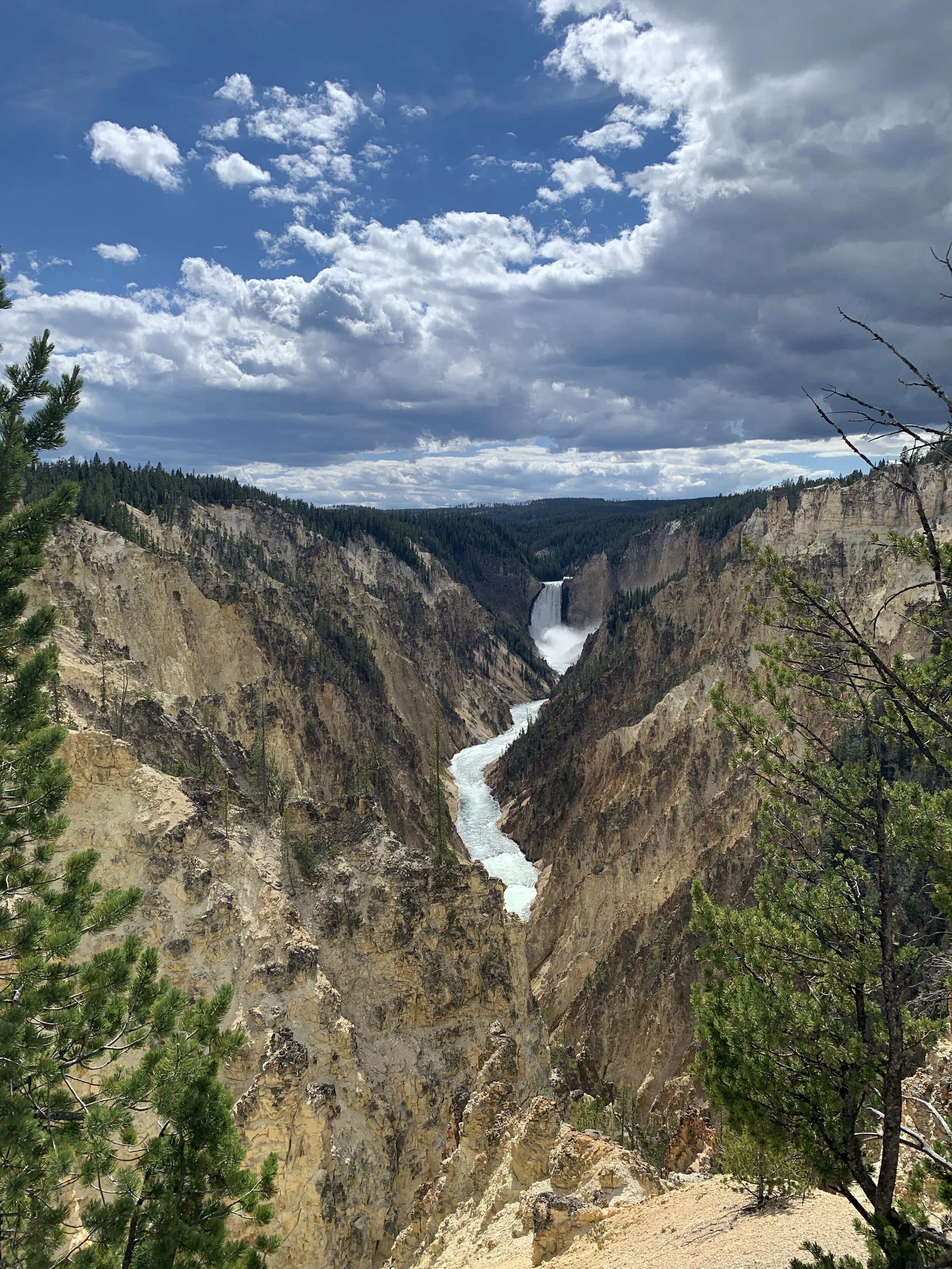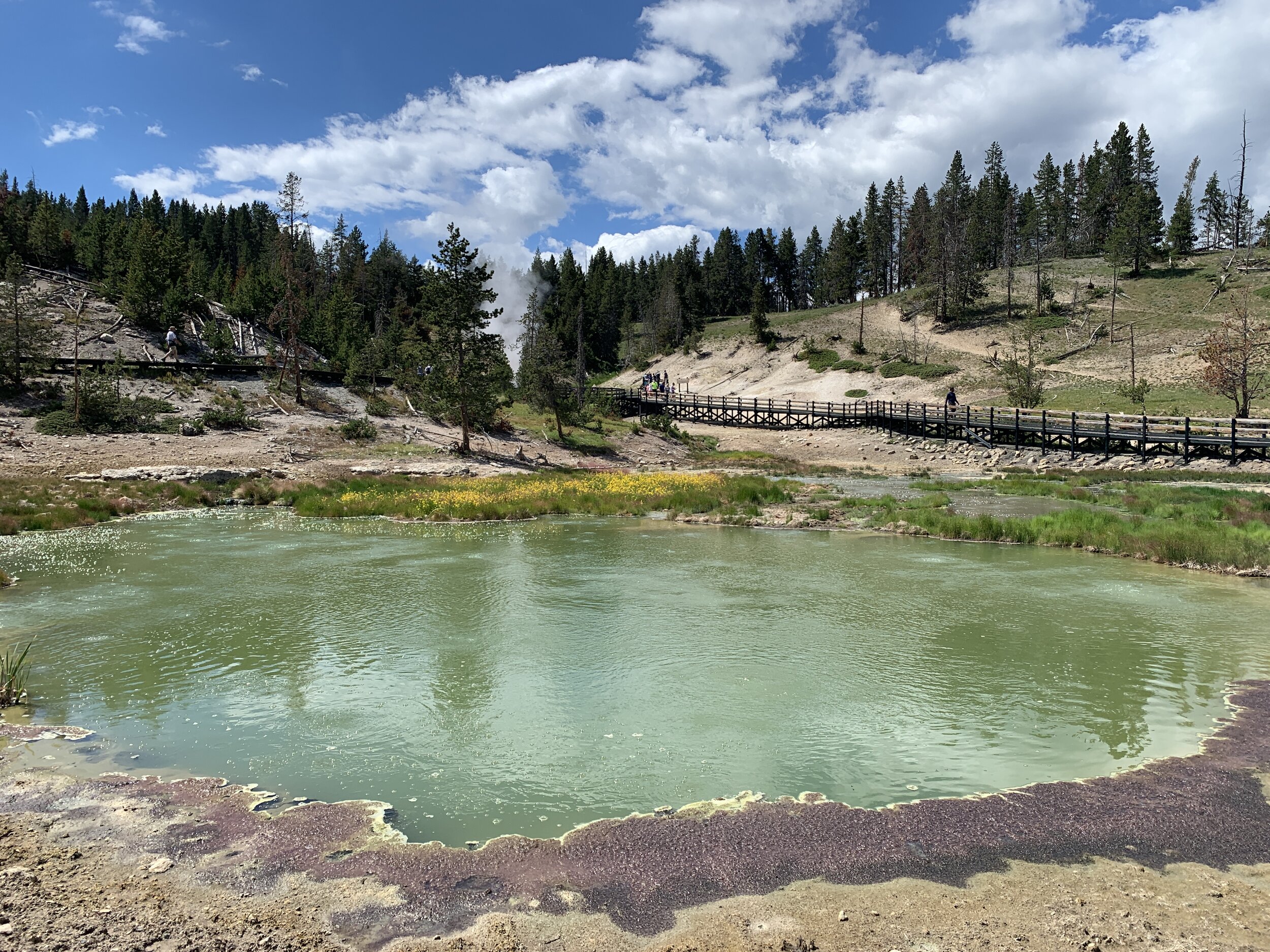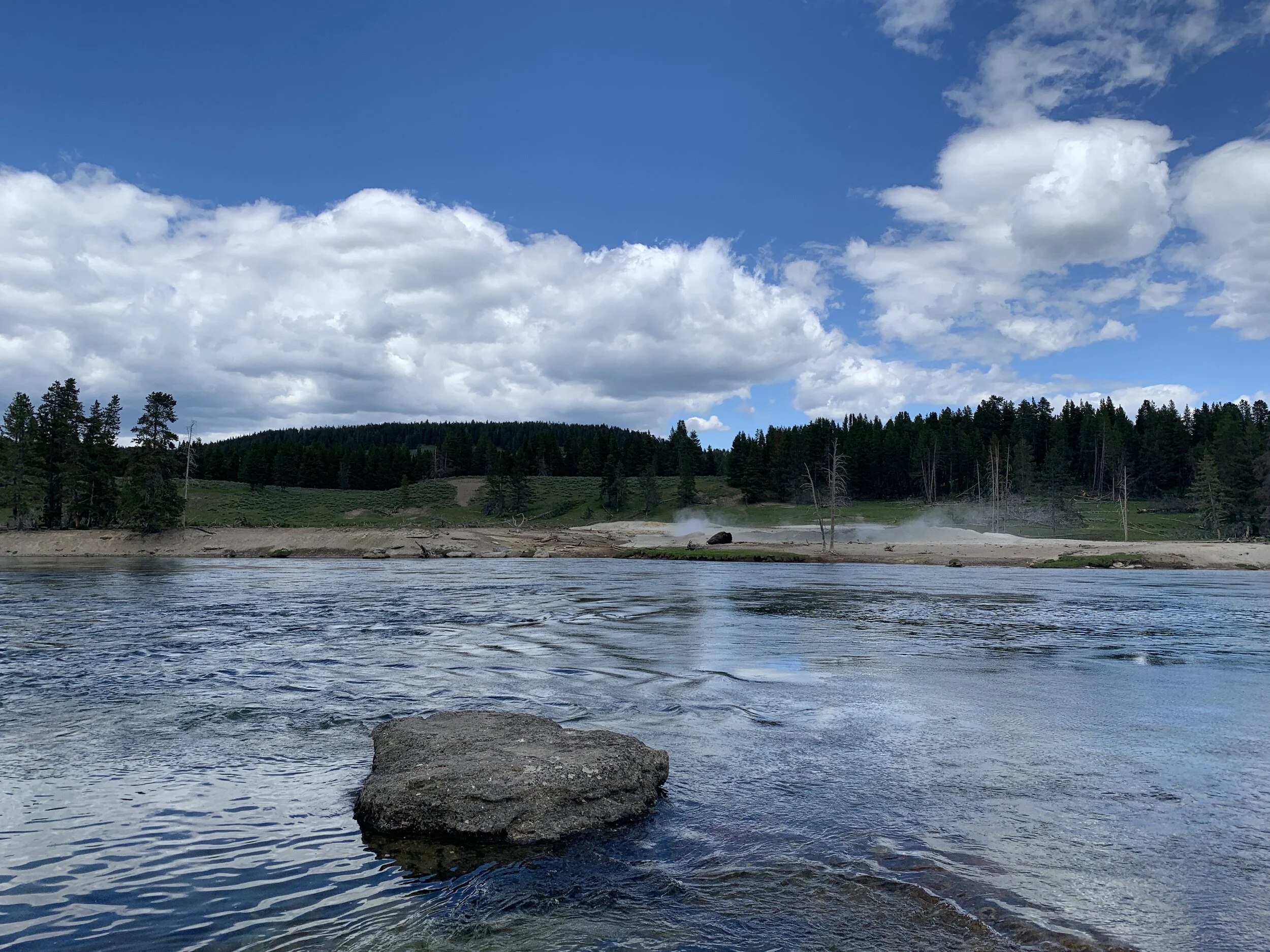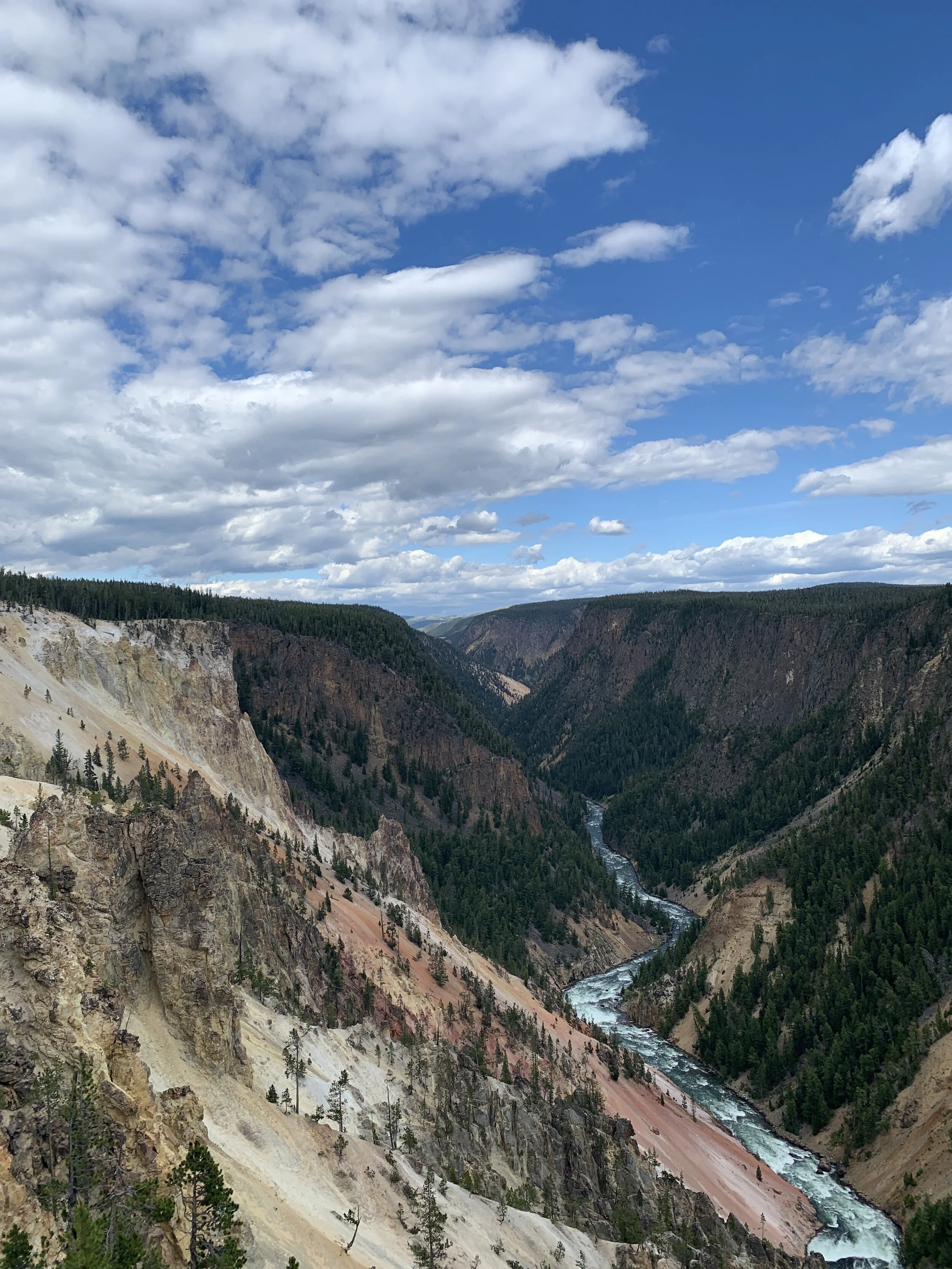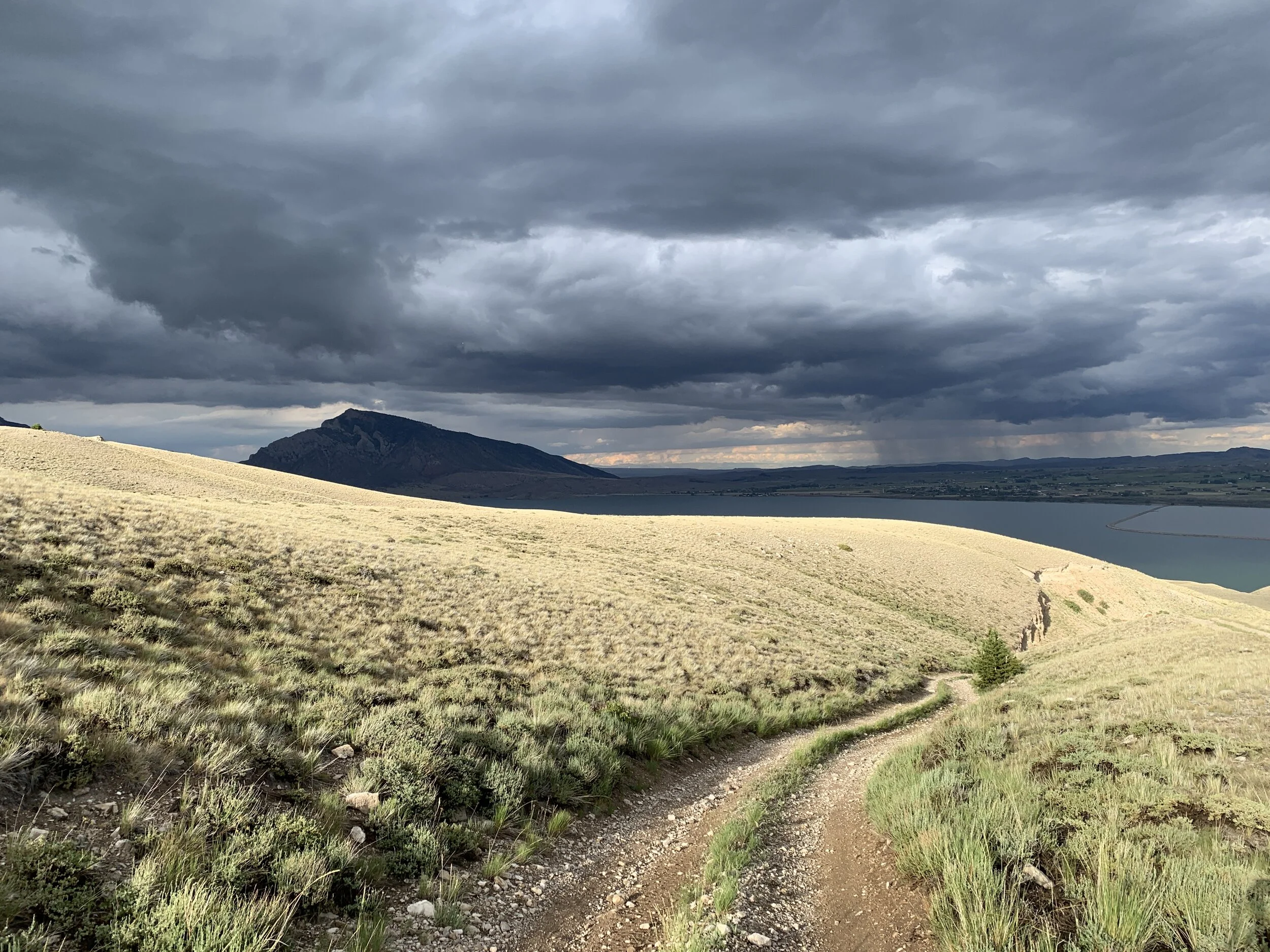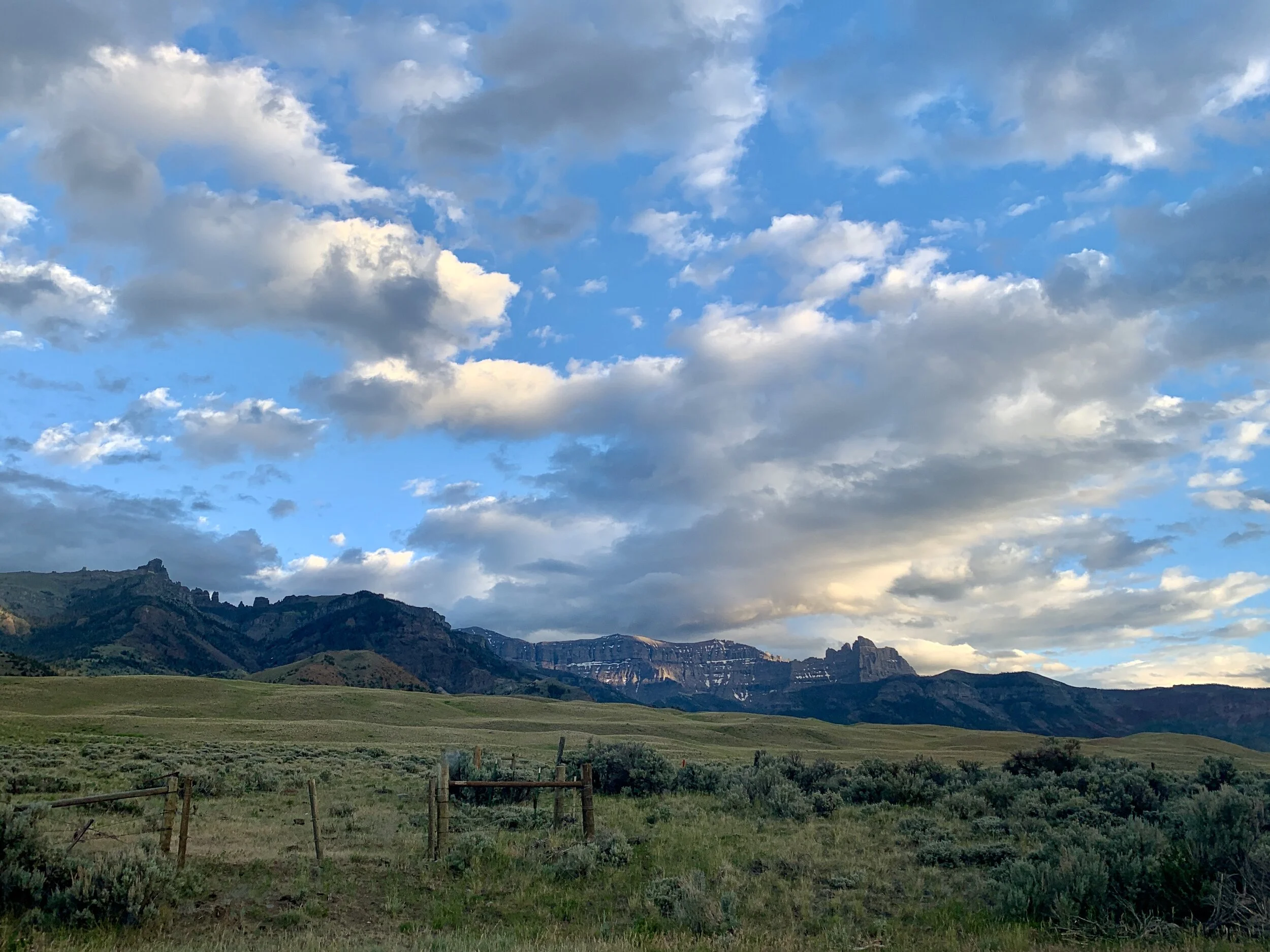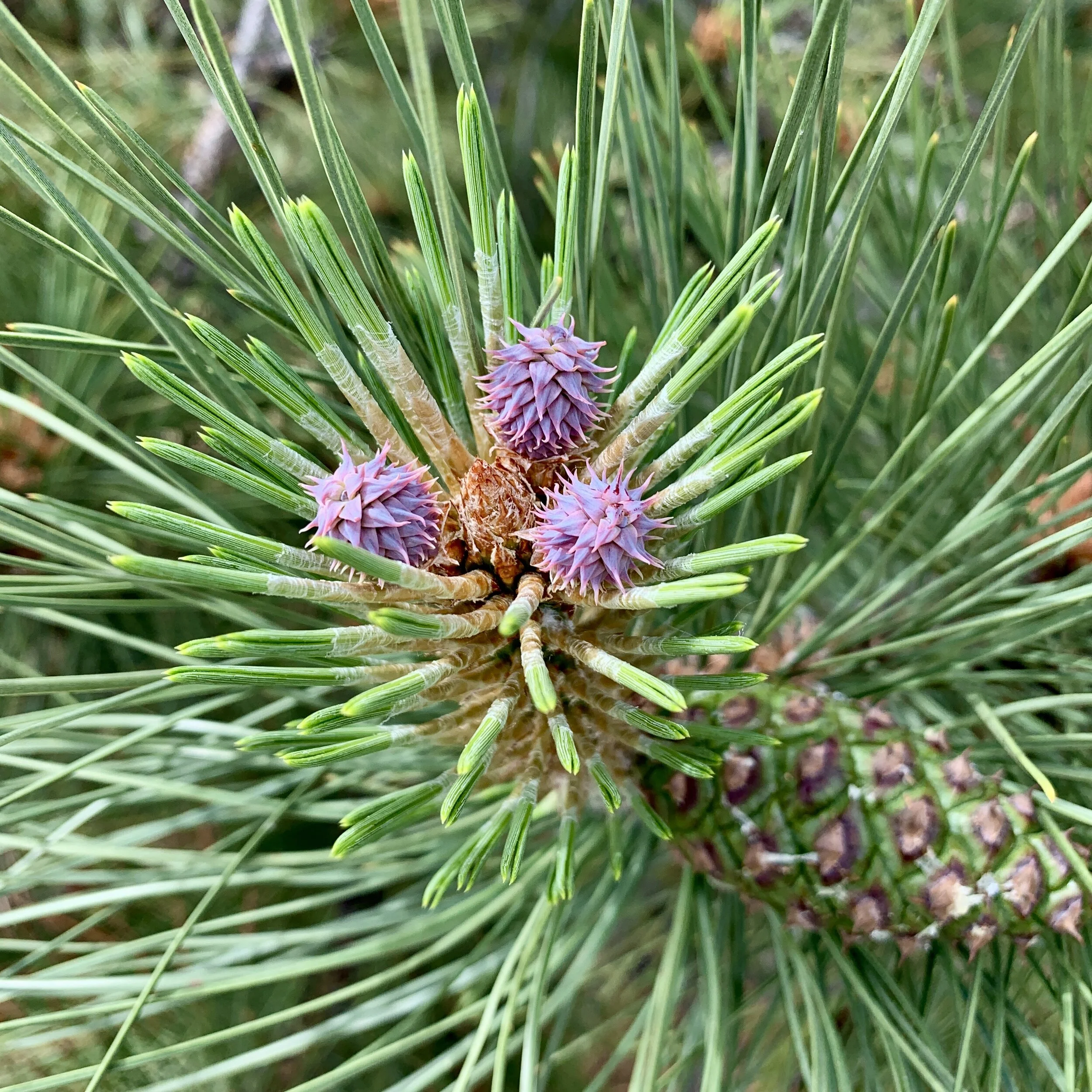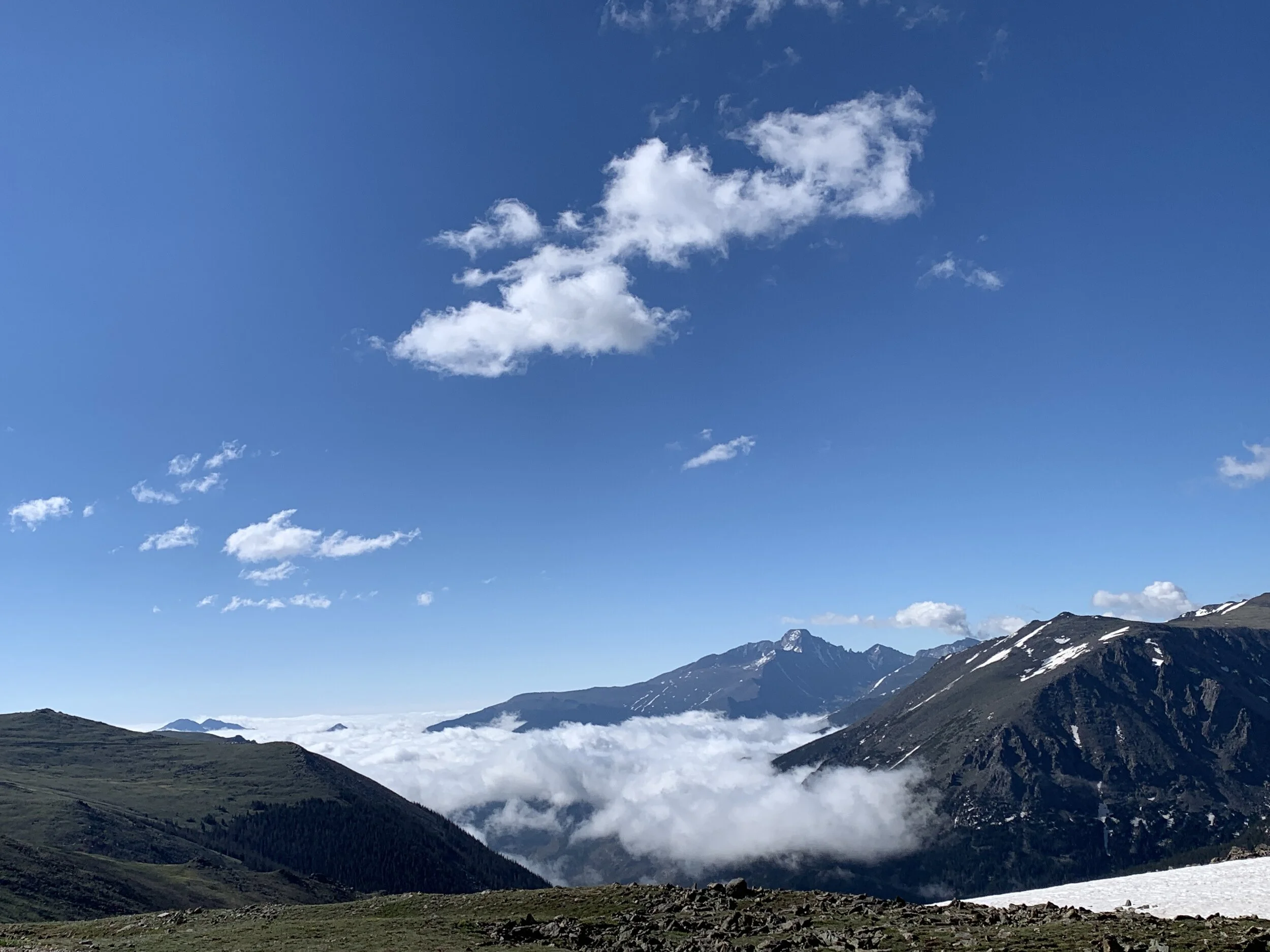Yellowstone National Park
Yellowstone National Park feels primal: smoking hot springs; muddy, roiling pools full of sulfuric acid; bison; antelope; a river that has carved a path—for so long—so deeply that you can barely see it from the canyon lip. The park reminds me of creation. In southern Wyoming (between the park and Colorado) there are flat lands covered in sagebrush, fences and cows. It feels like nothing. The land is full of absences: abandoned houses, shuttered businesses, dried up ponds and lakes. Driving through Wyoming there is nothing and then—BANG—there is everything. The thermophile organism that unlocked the DNA code strand, allowing us to ‘read’ genetic codes, was found in a hot spring in Yellowstone.
Hot spring next to the Mud Volcano. You can see Dragon’s Mouth steam in the background.
Dragon’s Mouth
Lamar Valley, in the north of the park, is possibly the only place in the country where you can understand that North America had savannas the same as Africa. The land opens up within the mountains, like it does in RMNP to the south, but here, a pack of wolves roams, and herds of bison graze; antelope and elk explore during the early hours of the morning. I’m sure a grizzly or two make their way down there. Did you know that bears live naturally in the prairie regions? We’ve killed them all from that habitat. Children don’t learn about the American ’sarengeti’ with big bears and fuzzy bison covering the earth as far as the eye can see. I heard that some people have proposed a prairie lands national park. Most other people find this silly, “what would you even see in such a park?” they ask, picturing fields of soy and corn. What they don’t know is that a grassland houses all the species I’ve listed above, in addition to insects, water-based species, and more birds than you could ever imagine.
See the Bison?
Today, what populates the park the most is people. Yellowstone is the second most visited park in the country with 3.8 million visitors in 2020 (yet there were roughly 90 million fewer visitors to the National Park system in 2020). My experience in the park corroborates these high numbers. I drove through a section of the park in a day and quickly decided not to stick around any longer than I needed. The park is beautiful and I will get to those good parts soon, but the amount of people created an experience that was more like a theme park than a nature experience.
Yellowstone River
Visitors to the park are able to drive to every point of interest, and walk less than half a mile to a viewing point. The result is that the park experience, for most, is primarily in the car. The parking lots are busy; cars wait in line for a spot to open up, pickup trucks balance themselves on slim pullouts on the roadside (often that are not park-approved spots for vehicles). I refrained from scolding people that walked up to the hot springs, right pass signs “Do not walk. Fragile area”. I wanted to yell at a man who was picking up branches along the road and breaking them against tree trunks.
I encountered a traffic jam as I was leaving the side loop for Inspiration Point. Cars were backed up along the main road. I had been warned about ‘wildlife backups’. When I drove through a meadow I saw people scampering through the grass, pointing, and carrying cameras with hefty lenses. I could not see what they were looking at, but based on the traffic, people’s behavior and the fact that multiple bison were visible on the other side of the road, I assumed there was a bear in the woods at the edge of the field.
I did not stop. I didn’t see the bear, but he didn’t need another set of eyes staring.
You last heard from me as I was preparing to head north from RMNP to Yellowstone. It took me a day and a half to drive across the state of Wyoming. I saw very few people. The route I took was on old, two-lane highways. The traffic was sparse, so much so that I noticed an emergency information sign regarding car crashes: if an accident occurred in the region, a helicopter was the first response—not a firetruck, or police officer, or sheriff. No one was stationed close enough to drive to the scene. There were large chunks of time where I did not have cell service and when I scanned the radio for local content (something I find entertaining when driving in new places) the scanner kept going in a loop, picking up nothing.
Cody, Wyoming is on the east side of Yellowstone National Park. I had a reservation to park in a retired couple’s front yard and arrived on Friday, June 25th. Sean was the name of my host. He is a retired wildlife biologist who lead tours in Yellowstone for fourteen years. His house is in a valley. The ridges flanking the valley are a part of the park. I woke up to Mount Carter out my front door. There was also plenty of BLM land (Bureau of Land Management), which is open for all uses, including hiking with a dog. On my arrival day Sean gave me a good hiking recommendation. The trail was the one he frequented and it afforded views of Buffalo Bill reservoir and the surrounding valley.
My final hike in the area, before driving through Yellowstone on my way to Teton National Park, was a quiet canyon trail farther down the valley from Sean’s house. The trail began in a field of sagebrush, then wound up through a dry rocky stream bed, and eventually brought me to a pine forest. The conifers reminded me of the White Mountains—I felt at home on this section of the trail. Wildflowers lined the path. It was evening and the forest was quiet. When I turned around to head back to the van the sun was setting behind me and illuminating the peaks across the valley. I’ll admit, I wanted to be on top of those peaks. I’m already saving my park maps for a trip in the future when I can hike inside park boundaries. But for now, there is so much beauty to experience elsewhere.

